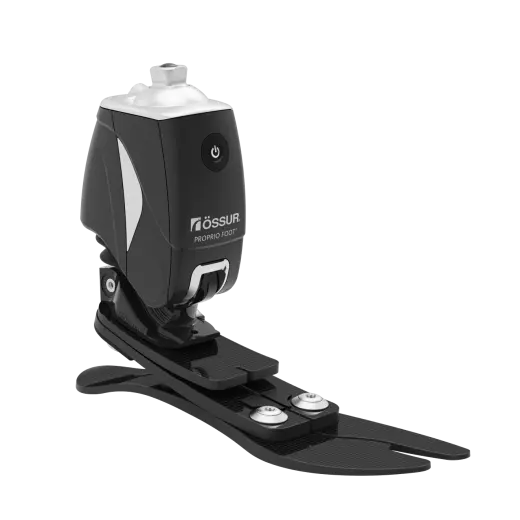Home > Products > Prosthetics > Microprocessors
Microprocessors
Microprocessors help prosthetic devices adjust automatically for smoother, safer mobility.

Microprocessors in Prosthetics and Orthotics: Enhancing Mobility with Advanced Technology
What Are Microprocessors in Prosthetics and Orthotics?
Microprocessors are tiny computer chips that process information in real time. In the field of prosthetics and orthotics, microprocessors are used to collect, analyze, and respond to data—such as movement, speed, and terrain—helping devices adjust automatically for smoother, safer mobility. These high-tech systems allow artificial limbs and braces to function more naturally, improving a patient’s independence and quality of life.
Unlike traditional mechanical devices, microprocessor-controlled prosthetics and orthotics can "think" and react to changing conditions. This leads to better stability, energy efficiency, and a more intuitive experience for users.
How Microprocessors Are Used in Prosthetic Devices
Microprocessors are commonly integrated into prosthetic knees, ankles, and feet. These smart components constantly monitor the user’s walking pattern and environment to make real-time adjustments. Some key benefits include:
- Adaptive Gait Control: Microprocessor knees (MPKs) like the Ottobock C-Leg® or Össur Rheo Knee® can detect walking speed and terrain changes, adjusting resistance for smoother movement and improved safety—especially on stairs, ramps, and uneven surfaces.
- Stumble Recovery: Many MPKs can sense if a user begins to trip and respond instantly to prevent a fall by stiffening or locking the joint.
- Energy Efficiency: By optimizing resistance and support based on the phase of walking, these devices reduce strain and fatigue, making daily activities more comfortable.
Microprocessors in Orthotic Devices
Microprocessors are also being used in advanced orthotic systems, such as knee-ankle-foot orthoses (KAFOs), to help individuals with muscle weakness or paralysis walk more naturally. Features include:
- Real-Time Joint Control: Orthotic devices like the Ottobock C-Brace® use microprocessors to monitor movement 100 times per second, allowing dynamic joint support for controlled bending and extension.
- Improved Safety: These systems respond to terrain and motion to prevent knee collapse during weight-bearing and provide support during transitions, like sitting or climbing stairs.
- Customizable Settings: Based on an individual’s unique gait and mobility needs, orthotic microprocessors can be fine-tuned for optimal comfort and performance.
Who Can Benefit from Microprocessor-Controlled Devices?
Patients with limb loss above the knee, those recovering from neurological conditions, or individuals with limited muscular control may benefit greatly from microprocessor-controlled prosthetic and orthotic systems. These devices are especially helpful for those who:
- Walk on uneven terrain frequently
- Experience instability with mechanical devices
- Want greater confidence and safety while moving
- Are seeking more natural and efficient movement patterns
Fitting and Customization
Every microprocessor-controlled device is custom-fitted by a certified prosthetist or orthotist. During the fitting process, your provider will:
- Assess your mobility needs and goals
- Select the appropriate microprocessor system
- Program the device to match your gait and activity level
- Conduct training sessions to ensure you feel confident using the technology
Because these devices are adaptive and programmable, adjustments can be made over time as your mobility improves or your needs change.
Learn More or Schedule a Consultation
At Advanced Prosthetics, we specialize in fitting advanced prosthetic and orthotic systems, including microprocessor-controlled devices. If you're ready to take the next step in improving your mobility, we’re here to help.
Contact us today to schedule a consultation and learn whether a microprocessor-controlled solution is right for you.
